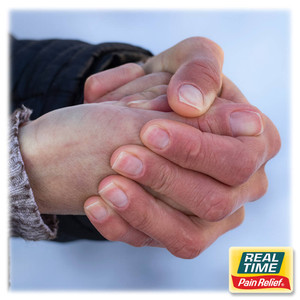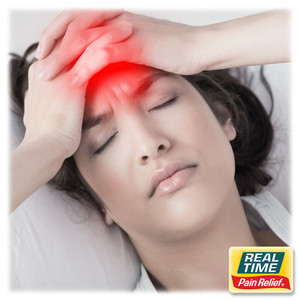Carrying the Load: Preventing Backpack-Related Pain in Students
Posted by Dennis R Escalera on 27th Jul 2025
Introduction
As students head back to school, their backpacks fill with books, supplies, electronics, and personal items. While this may seem harmless, carrying excessive weight or using a poorly-fitted backpack can lead to serious discomfort and even long-term musculoskeletal issues. Back, neck, and shoulder pain are increasingly common in school-aged children and teens—and often go unnoticed until the pain becomes chronic.
This article explores how backpack weight and poor posture can contribute to pain, how to choose and wear a backpack properly, and how topical pain relief creams and lotions made with nature’s ingredients may help manage muscle and joint discomfort.
Understanding the Problem
According to the American Chiropractic Association, a child’s backpack should weigh no more than 10–15% of their body weight. Yet studies show that many students carry much more, especially in middle and high school.¹ Overloaded or poorly positioned backpacks can:
- Strain the shoulders and neck
- Pull the child’s body backward, leading to poor posture
- Cause muscle fatigue
- Compress nerves, especially the brachial plexus
- Lead to long-term spinal misalignment
Symptoms students may report include:
- Shoulder pain or tingling
- Lower or upper back pain
- Stiff neck
- Headaches
- General fatigue
Risk Factors for Pain
Several common factors increase the risk of backpack-related pain:
- Overweight backpacks – especially those over 15% of the student's body weight
- Wearing only one strap – this uneven distribution increases spinal stress
- Improper size – backpacks that are too long or wide can affect balance
- Poor posture – slouching or leaning forward to compensate for the weight
- Lack of physical fitness – weak core and shoulder muscles increase injury risk
Prevention Tips for Parents, Teachers, and Students
The good news? These problems are largely preventable with proper awareness and proactive adjustments.
✅ 1. Choose the Right Backpack
- Size: Should rest two inches below the shoulders and not extend more than four inches below the waist.
- Straps: Wide, padded shoulder straps and a padded back panel are essential.
- Waist belt: Helps redistribute weight from shoulders to hips.
- Compartments: Multiple sections help distribute weight evenly.
✅ 2. Pack Smart
- Only carry what’s needed for the day.
- Place heavier books close to the back.
- Avoid bulky or unnecessary items.
✅ 3. Wear It Right
- Use both straps at all times.
- Tighten straps so the backpack fits snugly against the body.
- Use the waist strap for long walks.
✅ 4. Monitor Posture
Encourage children to stand up straight and engage their core. If the student is leaning forward or arching their back, the load may be too heavy.
✅ 5. Use Lockers or Digital Materials When Possible
Encouraging the use of school lockers or digital textbooks can help reduce backpack weight significantly.
When Pain Happens: Nature’s Relief Options
Even with proper prevention, students may still experience occasional soreness from carrying books or walking long distances across campus. In these cases, topical pain relief lotions and creams made with nature’s ingredients may offer safe, non-invasive relief.
? Helpful Ingredients:
- Arnica: Known to help reduce bruising, inflammation, and muscle aches²
- Menthol: Provides a cooling sensation and helps with minor aches and pain³
- Eucalyptus Oil: Aids in reducing pain and improving circulation⁴
- Aloe Vera: Soothes skin and may reduce inflammation
- Willow Bark Extract: A natural source of salicin, which has pain-relieving effects⁵
These ingredients, when applied directly to affected areas (shoulders, neck, or back), may help ease tension and improve comfort. Most importantly, they are non-greasy, easy to apply, and safe for repeated use—an excellent option for students who may not be able to take oral pain relievers during school hours.
When to Seek Medical Attention
While mild soreness is common, certain symptoms require professional evaluation:
- Persistent back or shoulder pain
- Tingling or numbness in the arms
- Difficulty walking or carrying even light items
- Visible postural changes
In such cases, a pediatrician, chiropractor, or physical therapist can assess the issue and recommend further intervention.
Final Thoughts
Backpacks are essential—but they shouldn’t cause pain. By selecting the right pack, using it correctly, and turning to pain-relieving creams with nature’s ingredients when discomfort arises, students may carry their load without harming their health.
Promoting healthy backpack habits not only protects posture but also fosters long-term musculoskeletal wellness—helping students focus on learning, not lingering pain.
? References:
- Lehigh Valley Health Network – Backpack Safety Tips
https://www.lvhn.org/news/watch-backpack-load - Arnica Montana Key Benefits -
https://realtimepainrelief.com/arnica-montana/ - Menthol Key Benefits -
https://realtimepainrelief.com/menthol/ - Eucalyptus benefits – Therapeutic applications of eucalyptus essential oils
https://link.springer.com/article/10.1007/s10787-024-01588-8#:~:text=The%20active%20compounds%20present%20in,their%20applications%20in%20various%20fields. - Willow Bark Key Benefits
https://realtimepainrelief.com/willow-bark/ - Aloe Vera Benefits -
https://realtimepainrelief.com/aloe-vera/





